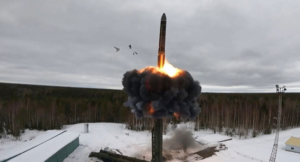
The 2023 wildfire season has set multiple records across Canada already this year, the federal government says, as we move into the second half of the summer.
In an update Friday, Michael Norton, the director general of the Northern Forestry Centre at Natural Resources Canada (NRCan), explains as of Aug 10, 5,093 wildfires across Canada have burned over 13 million hectares of land.
This is six times the average land burned, as the 10-year average at this time of year is 4,600 fires with 2 million hectares of land burned.
He adds that wildfire activity has been widespread burning from coast to coast this season.
“This is largely due to drought conditions across the country. … As discussed at the briefing I gave on July 6, this kind of simultaneous fire activity in all regions of the country is virtually unheard of, and is usually more regional, with one side of the country seeing more fire activity than the other over the course of the season. But, that is not what we’ve experienced this season,” he explained.
Norton says NRCan’s modelling, with data from Environment and Climate Change Canada, shows the potential for higher-than-normal fire activity remains across much of Canada in August and September.
“In some regions, rain has helped reduce fire activity to some degree but fires remain very active in places like British Columbia, Northwest Territories, and Yukon. Active evacuations, structural losses, and impacts on transportation and communication infrastructure are unfortunately continuing,” he said.
In June, Norton explains the historical average for area burned in that month is just under 461,000 hectares. This June, Canada saw 5.2 million hectares burn — more than 10 times the monthly average.
“This June we saw a record for the most area burned in a single day — June 22 — with 531,000 hectares burned in a single day,” Norton continued. “What’s remarkable is not just the spike on the 22nd, or the drastic increase in monthly area burned, but also the fact that it happened during the time when fire activity is normally somewhat lower — Boreal forests are normally greened up.”
Norton goes on to explain that not only is the area burned setting records this fire season, but carbon emissions due to the blazes are also “significant and increasing.”
“Our current preliminary estimates indicate that emissions from this wildfire season now exceed 1 billion tons of carbon dioxide equivalent,” he said.
“Smoke has also been, and continues to be, a major part of the story. From April 1 to August 8 3,002 Air Quality Alerts have been issued by Environment and Climate Change Canada — that is already close to double the previous record number of alerts issued just two years ago over the entire fire season.”







